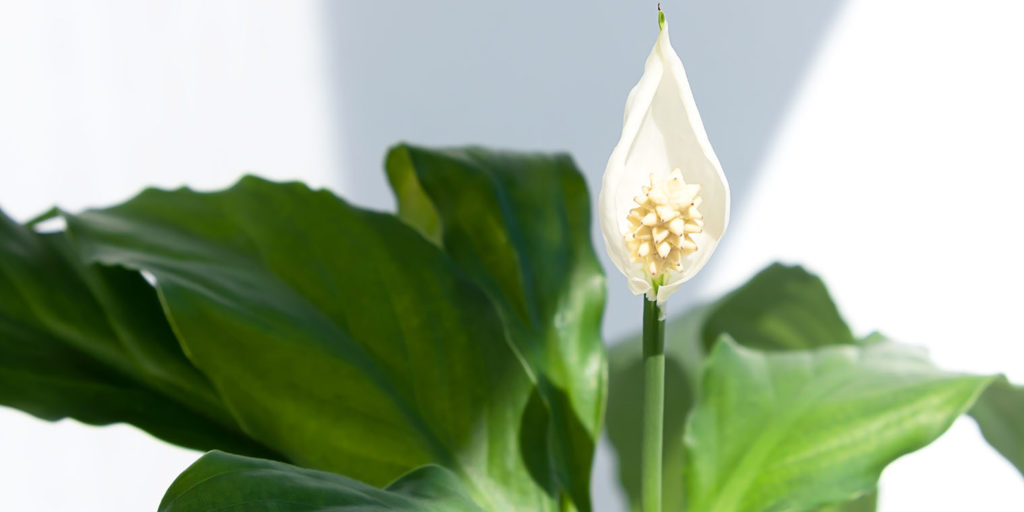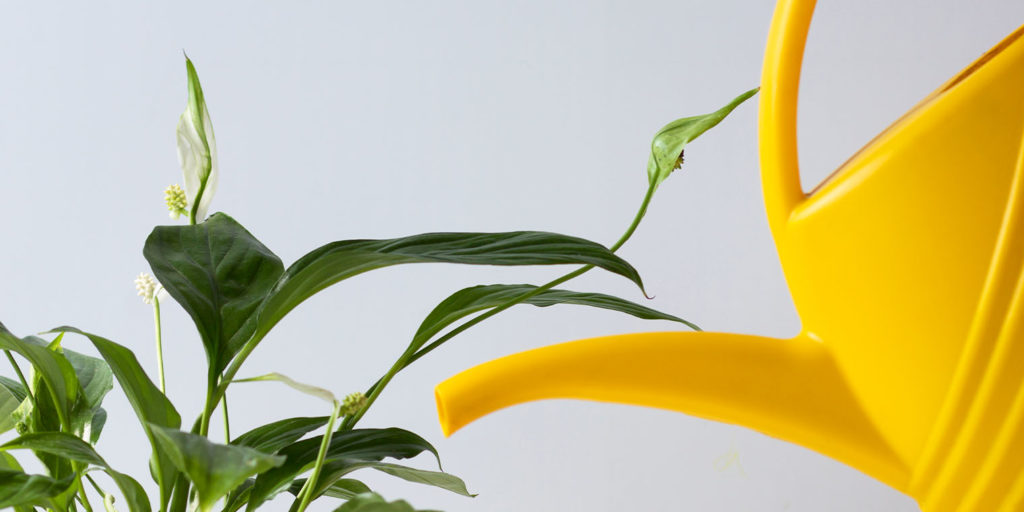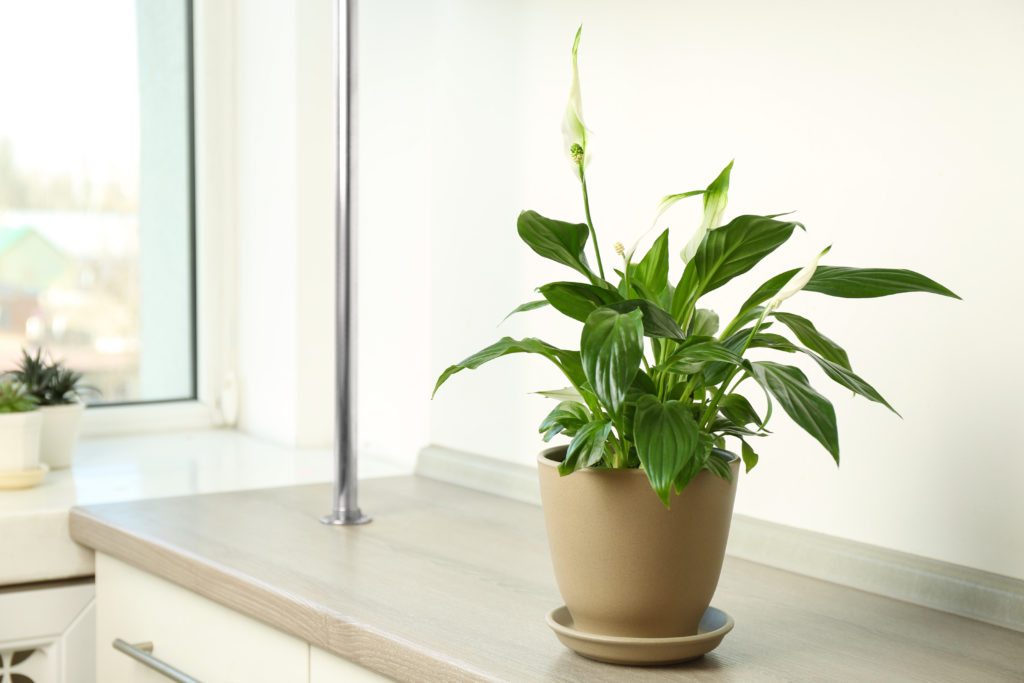The Peace lily is a wildly popular houseplant, and learning how to care for one is easier than you might think. Its distinctive white flowers have a single pointed petal encircling a large golden stamen, achieving that elegant yet effortless minimalist style. It really does bring a sense of peace and serenity to your space!
What Makes the Peace Lily So Special?
It’s also known as the “Spathiphyllum,” but that’s a bit of a mouthful, so Peace lily will do. Though it may look dainty, this plant is quite the powerhouse! One of the most effective air-purifying houseplants around, putting one—or several—Peace lilies in your home can have a major impact on your home’s air quality. It filters out harmful airborne toxins released from chemicals, household cleaning products, and even our home appliances.
Now, if you decide to give the Peace lily a chance, you may encounter its most prominent personality quirk: its dramatic tendencies. Sometimes if it doesn’t get the right amount of water or sunlight, it will flop right over! But don’t panic—this doesn’t mean it’s dying. It just means it needs some attention. If you figure out the reason for its dramatic display and fix the problem, your plant should perk back up in no time.

Light Requirements
Many people will insist that the Peace lily can survive in low light, and while this may be true, it isn’t the best environment for it. You’ll get the best results if you place it somewhere with plenty of bright, indirect light. A large North or East-facing window is an excellent spot. Alternatively, you can diffuse the bright window light from a South or West-facing window with a sheer curtain. This will make it a more comfortable spot because direct sunbeams will scorch Peace lily leaves.

Watering Your Peace Lily
The watering routine is one of the trickier parts of Peace lily care. But it’s nothing you can’t handle! The thing is, they like moist soil, but not too soggy. Allowing the top inch of soil to dry out before watering again produces the best results. A pot with drainage holes will help prevent overwatering by releasing excess moisture from the bottom.
While you may be tempted to stick to a “once per week” watering schedule, this doesn’t account for weather changes. The soil won’t dry as quickly during a humid, rainy period, and on a scorching hot day, it might dry out much sooner. Instead, monitor the soil by sticking your finger in it every couple of days. If it feels dry up to the first knuckle, it’s time to water.

Choosing Your Soil and Container
Your Peace lily will be happiest in a high-quality potting soil with lots of rich organic matter mixed in. Strangely, it tends to prefer being in a smaller container that’s slightly cramped, causing it to be rootbound. This will help it produce more pretty flowers! However, you don’t want it to be too rootbound.
You’ll know it is too rootbound when it flops over and looks thirsty only a couple of days after watering. If all the water is soaking up that fast, it’s a telltale sign that the roots are too cramped. Move your plant into a pot that’s 2 inches bigger, and try to find one with drainage holes.

Bonus Care Tips For Your Peace Lily
Here are a few other things that will help you keep your Peace lily looking its best:
- If the air in your home is dry, place your plant on a tray filled with pebbles and an inch of water. This creates a little bubble of humidity around your plant.
- Wipe the leaves with a damp cloth to remove dust buildup.
- Cut off spent blooms at the base of the stem.
- For more flowers and faster growth, use a balanced fertilizer every six weeks from spring to fall.
- If the stamen releases too much pollen, you can cut it off to avoid making a mess, and the flower will be fine.
We could all use a little more peace and beauty in our lives! Visit Living Color Garden Center to bring one of these beautiful and powerful plants home today!

